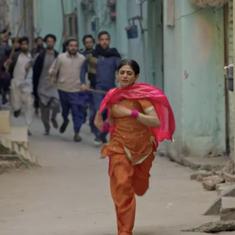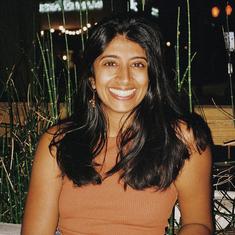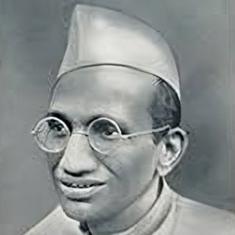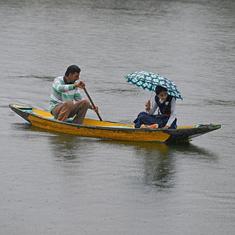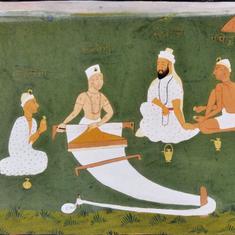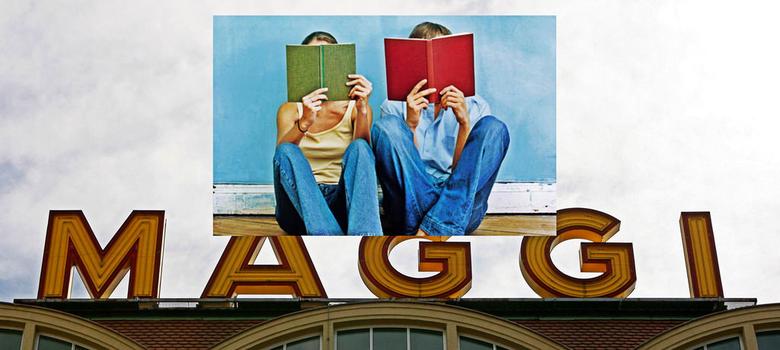But. You know what doesn’t have any lead in it? Books. (I’m not sure how much lead the printer’s ink has in it, but bear with me anyway.) I picked these six “nostalgia” reads because they came to India the same time Maggi did, in and around the 1980s.
The Far Pavilions, M.M. Kaye
You might know this book from the fleeting mention it gets in Jhumpa Lahiri’s Interpreter of Maladies when the character refers to “Ash-oak and his browned up princess.” But truth be told, The Far Pavilions was all the chick-lit I needed when I was in boarding school at sixteen and a single copy of this book made the rounds slowly (it’s a hefty tome.)
Set in British-Era India, it’s the story of Ashton aka Ashok, born around the time of the 1857 revolt, disguised as an Indian by his loving nanny and smuggled away into a small princely kingdom, raised as her son. Ashok then befriends the children of the royal family there, and makes some enemies, after which he has to escape and claim his English-ness again.
But wait! Ten years later, here’s Ashton, supremely handsome, and a great soldier and there’s the young princess who was his friend and now turns into his lover. Plus loads of intrigue and speeches about independent India and romance. (Time to read: two weeks, if you read slowly.)
The Naked Triangle (Hindi: Nangi Dhoop), Balwant Gargi
This was a book I discovered by chance on my parents’ shelf and opened because of the title. I was not disappointed. It was a full-on smut read, a sort of novel about Gargi’s sex life and I’m sure there were several other plot points, but all I remember is the pure lust.
There was also a lot of talk about feelings and men and women and relationships, and I often snuck it out to read, returning it to the same place each time, with the dread that it might be the last, only I don’t think my parents ever noticed it was gone. A good sum-up of sex and bohemia and the writer’s life in the 1980s both in America and India. Definitely more sexy than 50 Shades Of Grey.
(Time to read: two hours, if you’re, um, leisurely about it.)
Midnight’s Children, Salman Rushdie
If you haven’t read this book already, you should, and I could just leave it there, but I know what it’s like to be told that I “should” read something and then adamantly not wanting to. Read Midnight’s Children because Rushdie is his best self in it, something I haven’t found in his other works.
It’s a bit of a slow start, but let it unwrap itself before you like a carpet seller rolling out his prize rug. There is some amount of magic, some number of super heroes (sort of) and lots of Indian history, if all three things are your kind of thing.
(Time to read: two days on holiday, two years if you’re like me and get impatient fast, abandoning a book only to pick it up dusty and unloved years later.)
English August, Upamanyu Chatterjee
Also known as the book that turned into the film that made us all excruciatingly aware of Rahul Bose’s almost perfect bottom. This is pretty much the only book you need to read about both how bureaucracy in India works and descriptions of long, boring summers with nothing to do, unless like the narrator you smoke a lot of pot and masturbate.
August (Agastya) is a “People Like Us” narrator who joins the Indian Civil Service, and as a young IAS has to work out of a town called Madna, in a teeny tiny back alley of India. You have his musings and sharp observations of life in a small town, plus wicked descriptions of the characters he meets. I recommend this book to a lot of my foreign friends, who all recognise some of the paperwork they have to do in it.
(Time to read: two hours of a hot summer afternoon when the power’s gone, and you’re consoling yourself with watermelon and ice water.)
The Shadow Lines, Amitav Ghosh
Long before there was an Indian “lit scene” at all, there was Amitav Ghosh and a paperback version of this book which we had to do as part of our Indian literature segment in college. I say “had to” but he grew into a favourite author and a favourite book for a lot of us, even though we had to do that pedantic task of breaking his sentences apart for meaning and reference.
The book echoes with memories of family holidays, the abashed awe you might have for an older cousin, and the way geography pulls at all of you.
(Time to read: two months, at least, that’s how long the segment took in college.)
The Inscrutable Americans, Anurag Mathur
I have two distinct memories of this book: one, when we all first discovered it and rocked with laughter at the bewildered narrator, Gopal, finding himself a stranger in a strange land and having all sorts of misadventures. The second was several years later, when I re-read it and didn’t think it was funny at all. It made me very sad, but in a strange, self-satisfied manner, “look, I’m learning what good books are!”
That being said, I think my second judgement on this seminal piece of work was rather harsh. The Inscrutable Americans stands out for its place in time, a cult novel written when more Indian students were travelling abroad and finding the world a strange, but not entirely unfriendly place. Sure, some of the jokes are stale: “are red-headed women red all over?” “I’m Randy.” “Still?”
You need to read it while placing it firmly in that milieu, reminding yourself that when it was written, you the young Indian hoping to go to America, had no internet or even much television, and you relied on these narratives, even in a comic novel to reassure you that the world wasn’t a big, bad place after all. And if Mathur is to be believed, plenty of sex in America.
(Time to read: two minutes! No, not really, but fast and absorbing.)

